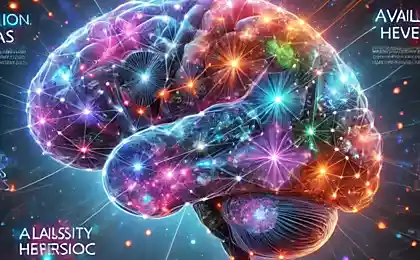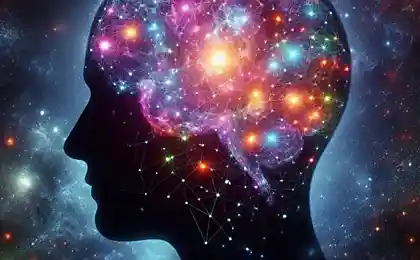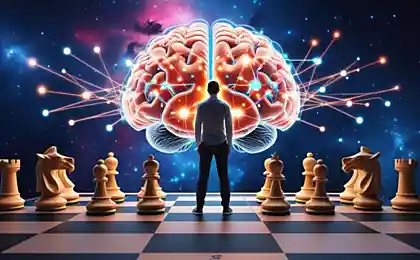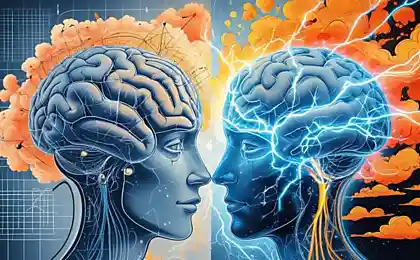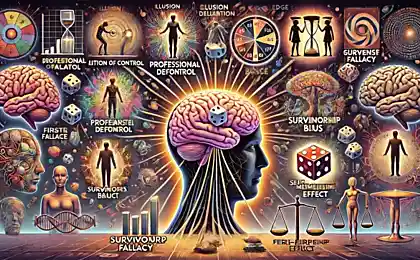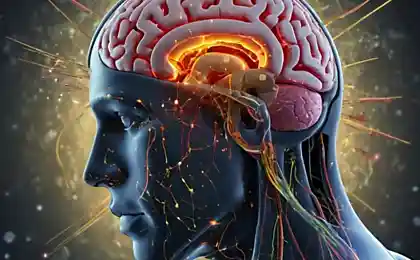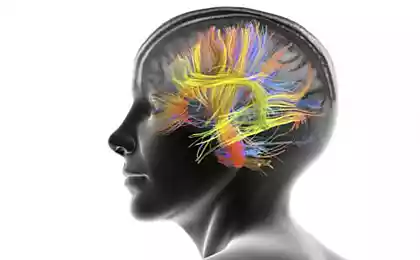244
Top 20 Insidious Cognitive Distortions: The Traps Your Consciousness Falls into

Our thinking is constantly setting traps that we fall into. Why does the mind do this, and how vulnerable are we to such “cuts”? Modern cognitive psychology argues that many of these distortions have evolutionary roots and help us save resources when making decisions. However, in addition to the obvious benefits (accelerating reactions under conditions of uncertainty), cognitive distortions often lead to erroneous assessments and conclusions.
In this article, we will examine twenty of the most common “consciousness traps” – from “halo effect” to “confirmation bias.” The material will be of interest to anyone who seeks to better understand their own mental processes and avoid typical perceptual errors. We will focus on popular science, relying, if necessary, on data from the American Psychological Association and other authoritative research in the field of cognitive sciences.
Main part
1. The Halo Effect (Halo Effect)
When we perceive one trait or quality of a person as “very positive” (such as beauty or high social status), we unwittingly overestimate other aspects of their personality. Or, conversely, with a negative first impression, we begin to see in a person completely flaws.
- Example: If someone seems genuinely friendly to us, we tend to think that they are both moral and competent.
- How to avoid: Try to evaluate a particular behavior or facts without generalizing the first impression to everything else.
2. The Anchoring Effect (Anchoring Effect)
Our brains tend to “attach” to the first information we receive (a number or fact) and then relate everything else to that anchor. For example, if you buy a car you will be called the price of 1 million rubles, any discount or higher price will be perceived through the prism of this figure.
- Role in marketing: sellers often intentionally overstate the initial cost to make the discount seem more profitable.
- Defense: Compare several independent sources before making a decision, without relying on a single indicator.
3. Confirmation bias (confirmation bias)
We tend to pay attention mainly to information that confirms our point of view and ignore facts that contradict it. This distortion is particularly noticeable in political discussions, where everyone tries to find “proof” of their rightness, filtering everything that does not agree with their opinion.
- Danger: It creates a closeness to new ideas, interferes with the objective search for truth.
- How to fight: Look for arguments “against” your position, test alternative hypotheses.

4. Gambler's Fallacy (Gambler's Fallacy)
The probability of falling “eagle” on the coin does not depend on how many times in a row the “tails” fell out before. However, people often believe that if the tail has fallen many times, the eagle is about to appear. In reality, each series obeys the laws of probability, not the mystical order.
- Example: A roulette player, seeing black 5 times in a row, begins to bet on red, thinking that the chances of red are now higher.
- Correction: Remember that in independent events, past outcomes do not affect future outcomes.
5. The Dunning-Kruger Effect (Dunning-Kruger Effect)
This is a cognitive bias in which people with low levels of skills in a particular area tend to overestimate their abilities, while more competent specialists, on the contrary, usually underestimate the evaluation of their skills.
- Example: A novice cook can consider himself a genius of cooking until he faces real competition.
- How to avoid: Get regular feedback, compare your self-esteem with objective indicators (results, expert opinion).
6. The placebo effect
In medicine, a placebo is a substance that does not contain the active ingredient, but the patient believes it is a medicine and feels better. A similar distortion can manifest itself in any area of life: if we believe in the effectiveness of a method, we often see “results” because the mind is so tuned.
- What's the use: The placebo demonstrates the power of belief and psychosomatics.
- Where's the harm? An unjustified belief in a “pseudo-solution” may delay the application of real effective methods.
7. FOMO (Fear of Missing Out)
Modern people often suffer from the fear of missing something important: an event, a discount, news, an opportunity. Social media warms up FOMO, showing as if everything is “where interesting” and you are not. As a result, we can overload ourselves with unnecessary activity and information, feeling constantly anxious.
- Example: Buy tickets for a concert that is not so interesting, just to “not miss”.
- Defense: The realization that you can’t get anywhere, the choice of priorities, the digital detox.
8. “Sunk Cost Fallacy” (Sunk Cost Fallacy)
If we’ve already invested a lot of time and resources into a project (or relationship), we tend to keep going, even if it’s no longer profitable or rational. In business, this can lead to the “burying” of millions in a failed project, in personal life – to painful and hopeless relationships.
- How to recognize: You say to yourself, “I’ve already spent so much, I have to continue, otherwise all the efforts were wasted.” But the actual "benefit" of the sequel may be questionable.
- How to overcome: Look at the future, not past investments. What will you gain from further participation? What are the alternatives?

9. The Overconfidence Effect (Overconfidence Effect)
People tend to overestimate their accuracy in predictions and judgments. More than 80% of drivers consider themselves “better than average”. Similarly, we overestimate the ability to evaluate complex information without proper analysis.
- Impact on decision-making: Unwarranted optimism can lead to risk when we see no limits.
- What to do: Check the facts, consult with experts, understand the limits of their competence.
10. Contrast effect (contrast effect)
Our perception compares objects not “absolutely”, but according to the principle of contrast with the surroundings. If you try on a sweater after an expensive fur coat, the sweater will seem “inexpensive”. Or, if you show each other pictures of two apartments in a row, the second one will seem better/worse than the first one, rather than by itself.
- In marketing: By displaying premium products next to the average, sellers make the average product “look profitable”.
- Council: Evaluate choice in absolute terms: “Is it important to me?”
11. Observer effect in social psychology
Not to be confused with quantum mechanics: in the context of human behavior, what we're saying is that people change their behavior when they know they're being watched. And sometimes dramatically.
- Example: The person in the company behaves differently than in private: more polite or, conversely, more risky.
- Where's the mistake? It is not entirely correct to judge someone’s character by behavior under “demonstration” conditions.
12. The Barnum Effect (Barnum Effect)
People tend to recognize themselves in the most general descriptions as if they are unique. Horoscopes, fortune-telling, pseudo-test personality actively use this phenomenon: "You are sometimes timid, but when necessary, show firmness" - sounds like "about us."
- Danger: “mystical teachings” and manipulators can use this effect to instill confidence in generalized statements.
- How not to get caught: Remember that general formulations fit most people, it is important to detail and verify the facts.
13. False Consensus Effect (False Consensus Effect)
We assume that our beliefs and preferences are shared by far more people than they really are. In a company or on social media, it seems like everyone thinks like us, but the filter bubble and the surroundings distort reality.
- Outcome: Overestimation of the “common acceptance” of one’s views can lead to a misunderstanding of others’ positions.
- Council: Expand your social circle, listen to alternative opinions, study statistics, not subjective impressions.
14. The Black and White Thinking Effect
Man sees the world in extremes: "Either everything is bad or everything is perfect; or man is good or bad." This binary makes it impossible to see intermediate options. In a relationship, this leads to the “division” of the partner into “very ideal” and “absolutely bad”.
- Problem: Simplified perception underestimates the complexity of reality and prevents compromise.
- Treatment: Learn to notice shades, recognize that situations and people are multifaceted.
15. Selective Perception (Selective Perception)
You only notice details that confirm your biases. For example, if you’re convinced that a certain acquaintance is “always late,” you’ll particularly note each person’s lateness and ignore their arrival.
- Creates a vicious circle: You prove yourself right by ignoring conflicting facts.
- Exit: Try to collect the full picture, consciously look for information that contradicts your stereotypes.
16. “Groupthink” or “Groupthink”
In the collective, people can agree with ideas only to maintain “peace” and unity, even if the idea itself is questionable. A classic example is mass acceptance of a decidedly wrong decision in corporations where criticism is not welcome.
- Reason: Fear of being a “white sheep” or losing support.
- What to do: Encourage alternative viewpoints in meetings, create a “devil’s lawyer” to test ideas.
17. The Spotlight Effect (Spotlight Effect)
We overestimate how much other people notice our mistakes or absurdities. Everyone looks at us and criticizes us for the least. But in reality, everyone has their own concerns, and no one focuses on our mistakes the way we imagine.
- Implications: excessive anxiety, shyness, fear of performances.
- Approach: Remember that people are more focused on themselves than on us.
18. The Illusion of Control (Illusion of Control)
We tend to think that we can control events that objectively do not depend on us (weather, random events, stock exchange events). This can give confidence, but sometimes leads to the risk of overestimating your capabilities.
- Observation: Casino players can “ritually” hope to increase their chances of winning.
- Council: Be aware of the limits of your power, focus on what you can really change.
19. The phenomenon of normalcy bias.
Or ostrich syndrome: when a person underestimates the possibility of a catastrophic event, assuming that everything will be as always. This distortion prevents time to prepare for crises, natural disasters or sudden changes in the labor market.
- Example: People may ignore the signals of imminent dismissal or breakdown of the relationship, believing that “everything is as usual”.
- Reaction: Healthy skepticism, risk-taking, and Plan B help avoid the consequences of self-assured “normality.”
20. "Reactive Resistance" (Reactance)
When freedom of choice seems to be limited, there is an impulse to do the opposite. Teenagers often show reactivity when parents try to control every little thing. Adults may also show resistance if they feel pressured.
- Manifestation: Sometimes people reject good advice because they are “forced” to accept it.
- How to soften: Provide alternatives, recognize the human right to choose, explain logic, not force.
Conclusion
Cognitive distortions are a kind of “design mistakes” of our mind caused by evolutionary, social, and personal factors. They can be useful for quick reaction in typical situations, but in today’s complex world they lead to serious miscalculations. It is important to be able to notice these traps: mindfulness and critical thinking are the best tools for correcting the “software bugs” of consciousness.
Of course, we can’t live completely cleansing our brain of all the distortions. Sometimes these mechanisms make life easier, but if we have to make big-stakes decisions — whether it’s financial matters, choosing a partner, turning a career or a global problem — knowing about cognitive biases becomes a valuable asset. It allows you to question your “confidence” in time, check alternative data, consult with specialists and not succumb to the effect of “first impression” or “group approval”.
Try asking yourself sometimes, “Am I not trapped in an anchor?” Maybe I'm just trying to validate my beliefs by ignoring the facts. Are you sure the decision isn't driven by emotional suggestion? Such self-testing is a step towards more objective and mature behavior. There are fewer “stupid” mistakes that could have been avoided.
